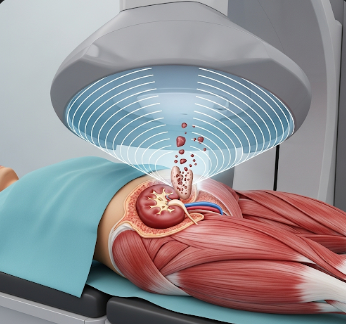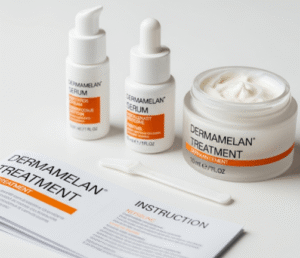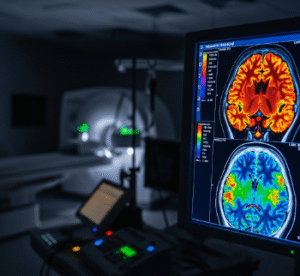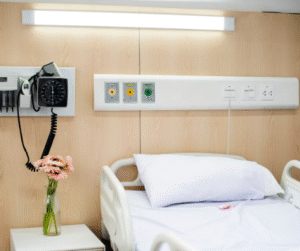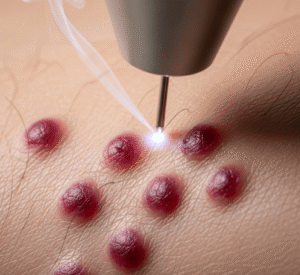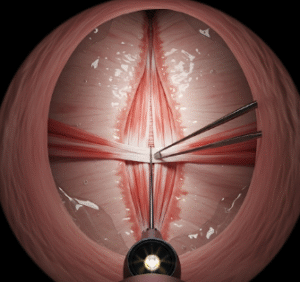Overview
Extracorporeal Shock Wave Lithotripsy (ESWL) is a non-invasive medical procedure used to treat kidney stones and ureteral stones by using high-energy shock waves to break stones into smaller fragments that can pass naturally through the urinary tract. ESWL is a safe and effective alternative to surgery for appropriately sized stones and is widely performed to relieve pain, prevent complications, and restore urinary function.
In South Korea, ESWL is performed in advanced urology centers and hospitals using state-of-the-art lithotripters, real-time imaging guidance, and specialized anesthetic protocols, ensuring high success rates with minimal complications and rapid recovery.
What is Extracorporeal Shock Wave Lithotripsy (ESWL)?
ESWL is a non-surgical technique where shock waves generated outside the body are focused on kidney or ureteral stones. The energy of the waves breaks stones into tiny fragments, which are then naturally eliminated through urine.
Purpose:
- Treat kidney and ureteral stones without invasive surgery
- Relieve pain, urinary obstruction, or recurrent infections
- Minimize hospitalization and post-procedure recovery time
Stone suitability:
- Small to medium stones (<2 cm in diameter)
- Stones located in the kidney or upper ureter
- Patients without severe bleeding disorders or uncontrolled infections
What are the Benefits?
ESWL provides several therapeutic and practical benefits:
✔ Non-invasive procedure, avoiding open or laparoscopic surgery.
✔ Quick treatment with minimal anesthesia or sedation.
✔ Short recovery time; often performed on an outpatient basis.
✔ Reduced risk of infection and surgical complications.
✔ Allows patients to resume daily activities within a few days.
Procedure Details
1) How should I prepare for ESWL?
- Medical assessment: Blood tests, urine tests, imaging (ultrasound, X-ray, or CT scan)
- Medication review: Discuss anticoagulants, aspirin, or other medications
- Hydration: Adequate fluid intake before the procedure
- Fasting: Usually required for 4–6 hours if sedation is used
- Consent and counseling: Understand procedure, expected outcomes, risks, and post-procedure care
Korean urology centers provide personalized pre-procedure evaluation, imaging guidance, and patient education for safe and effective treatment.
2) What happens during ESWL?
- Anesthesia or sedation: Mild sedation or local anesthesia depending on patient comfort
- Positioning: Patient lies on a specialized table or water bath to target the stone
- Shock wave application: High-energy shock waves are focused on the stone using fluoroscopy or ultrasound guidance
- Stone fragmentation: Multiple shock waves gradually break the stone into small fragments
- Duration: Typically 30–60 minutes depending on stone size and location
Advanced Korean centers use latest-generation lithotripters, real-time imaging, and precision targeting to maximize effectiveness and minimize tissue injury.
3) What happens after ESWL?
- Immediate: Mild discomfort, blood in urine, or bruising at treatment site may occur
- Post-procedure care: Drink plenty of water to facilitate passage of stone fragments
- Follow-up: Imaging may be done in 1–2 weeks to assess stone clearance
- Recovery: Most patients can resume normal activities within 24–48 hours
Risks / Benefits
Potential Risks:
- ➤ Mild pain or discomfort during stone passage
- ➤ Hematuria (blood in urine)
- ➤ Bruising or soreness in the back or flank
- ➤ Infection or urinary tract obstruction by stone fragments
- ➤ Rare complications: kidney injury, pancreatitis, or bleeding
Major Benefits:
- ✔ Non-invasive, avoiding surgery and related complications
- ✔ Rapid relief of urinary obstruction and pain
- ✔ High success rates for suitable stones
- ✔ Outpatient procedure with short recovery time
- ✔ Can be repeated if necessary for residual fragments
Recovery and Outlook
- Immediate: Mild soreness or blood in urine is normal
- Short-term: Drink plenty of fluids to flush stone fragments; pain may be managed with OTC medication
- Follow-up: Imaging after 1–2 weeks to ensure complete stone clearance
- Long-term: Most patients achieve full resolution of symptoms; recurrence prevention may include dietary changes and medication
South Korean urology centers provide comprehensive post-procedure monitoring, hydration and pain management guidance, and dietary counseling to reduce recurrence.
When To Call the Doctor
Contact your doctor if you notice:
- ➤ Severe pain not relieved by medication
- ➤ Persistent or heavy bleeding in urine
- ➤ Fever, chills, or signs of infection
- ➤ Inability to pass stone fragments, causing urinary obstruction
- ➤ Unusual swelling or bruising
Best Korea Option / Process
South Korea offers world-class ESWL services due to:
- Experienced urologists specializing in kidney stone management
- Advanced lithotripters with real-time imaging guidance
- Minimally invasive outpatient treatment with high success rates
- Structured pre- and post-procedure care for optimal recovery
- Rapid return to daily activities and minimal hospital stay
- International patient support including consultation, scheduling, and follow-up
Top hospitals for ESWL in Korea:
- Samsung Medical Center, Seoul – Urology & Kidney Stone Center
- Asan Medical Center, Seoul – Advanced Endourology & Stone Treatment
- Severance Hospital (Yonsei University Health System) – Minimally Invasive Urology
- Seoul National University Hospital – Urology & Lithotripsy Services

